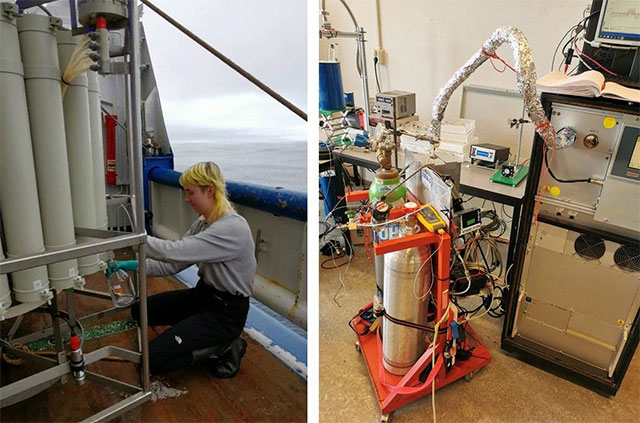27 million tons of nanoplastic particles discovered in the North Atlantic
Tiny microplastics are flooding the Atlantic Ocean in huge quantities. Their impact is only just beginning to be understood.
A major study by the Royal Netherlands Institute for Sea Research (NIOZ) and Utrecht University has revealed shocking results: an estimated 27 million tonnes of plastic in the form of ultrafine particles smaller than 1 micrometre are currently floating in the North Atlantic. The findings provide a deeper understanding of the scale of microplastic pollution, a global problem.
' There is more nanoplastic in this area than there is microplastic or macroplastic floating in the Atlantic—or even all the world's oceans combined, ' says Helge Niemann, a researcher at NIOZ and professor of geochemistry at Utrecht University. In mid-June, he received a €3.5 million grant to expand his research on nanoplastics in the marine environment and their long-term impact.
Sophie ten Hietbrink, a member of the research team, spent four weeks working on the RV Pelagia. During the voyage from the Azores to the European continental shelf, she collected water samples from 12 different locations, filtering out particles larger than 1 micrometer.
' By drying and heating the residue, we can measure the characteristic molecules of different plastics in the lab in Utrecht, using mass spectrometry ,' explains Ten Hietbrink.
The team has created the first quantitative framework for estimating the amount of nanoplastics in the oceans. Several studies have previously demonstrated the presence of nanoplastics in seawater, but no one has been able to estimate the quantities. The breakthrough was the result of a collaboration between marine researchers and atmospheric science expert Dusân Materic from Utrecht University.
By scaling up data from multiple sampling sites, the team estimates that the North Atlantic Ocean alone contains about 27 million tons of nanoplastics. For years, scientists have been at a loss to explain the fate of all the plastic ever produced. The new findings suggest that a large portion now exists as microscopic particles in the ocean.

How do nanoplastics enter the ocean?
Nanoplastics can enter the ocean in a number of ways. Some form when larger pieces of plastic break down in sunlight. Others are washed into the ocean by rivers. There is also evidence that they are transported through the atmosphere, fall into the ocean with rain, or are deposited directly onto the water surface (called 'dry deposition').
According to Niemann, the presence of these particles could have far-reaching biological effects: ' We already know that nanoplastics can penetrate deep into the body, and have even been found in brain tissue. Now that we know they are ubiquitous in the ocean, it is clear that they have permeated the entire ecosystem—from bacteria and microorganisms to fish and even apex predators like humans. The impact of this pollution deserves further study .'
In the future, Niemann and colleagues want to do more research on undiscovered plastics in the 1-micrometer or smaller particle size group: ' For example, we did not find polyethylene or polypropylene among the nanoplastics. It is possible that they are masked by other molecules. We also want to know whether nanoplastics are common in other oceans. It is very possible, but that needs to be proven .'
' The amount of nanoplastics in ocean water was a crucial missing piece, but now there's nothing we can do to clean them up,' he stressed. 'The key message from this study is: At the very least, we have to stop plastic pollution from continuing .'
You should read it
- What is ABS plastic? Applications of ABS plastic in life
- How dangerous chemicals are in plastic consumer products
- What is PP plastic? These products are manufactured from PP plastic
- Chemical recycling can be a solution to the problem of plastic waste pollution
- Things to know when using food plastic
- How are people using plastic to destroy nature?
 These fruit trees can turn CO₂ into rock
These fruit trees can turn CO₂ into rock Animals That Could Reshape Earth's Waterways
Animals That Could Reshape Earth's Waterways New research shows fish are smarter than we thought
New research shows fish are smarter than we thought How dangerous is the toxic substance in the poison ivy that can kill people in a short time?
How dangerous is the toxic substance in the poison ivy that can kill people in a short time? What is the Strait of Hormuz and why is it important?
What is the Strait of Hormuz and why is it important? What is a krait? Why do kraits often crawl into houses?
What is a krait? Why do kraits often crawl into houses?